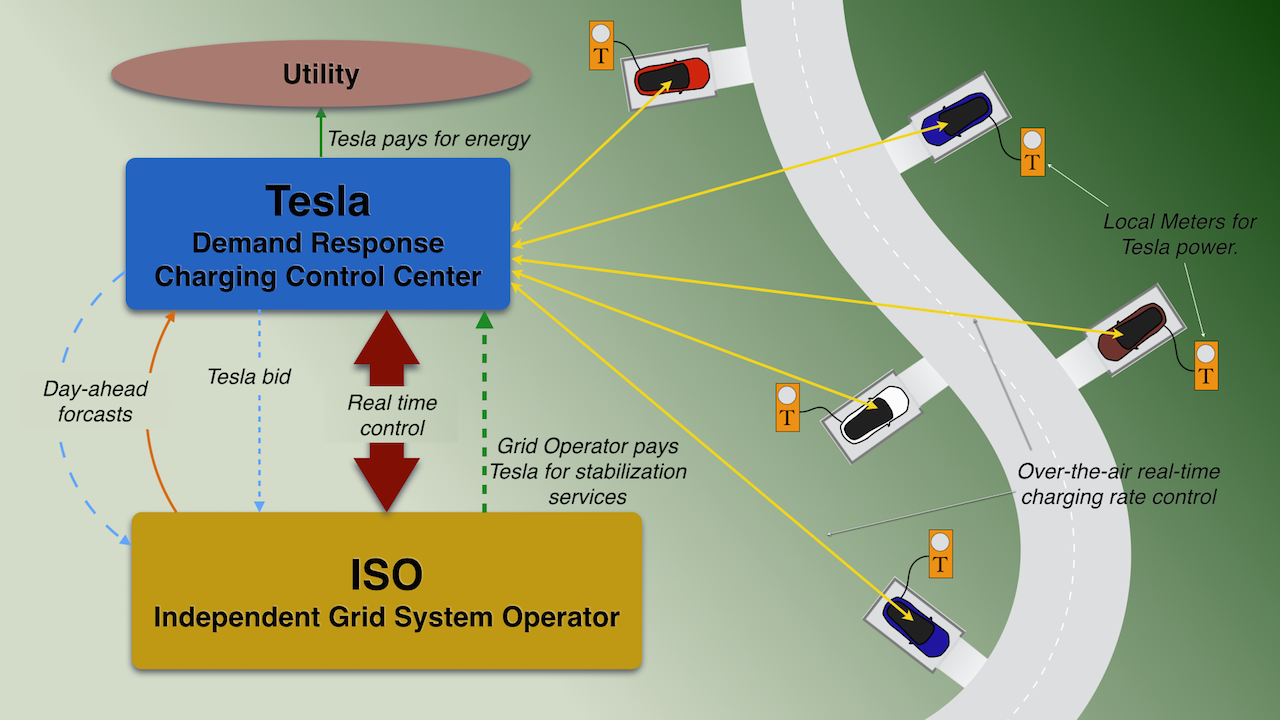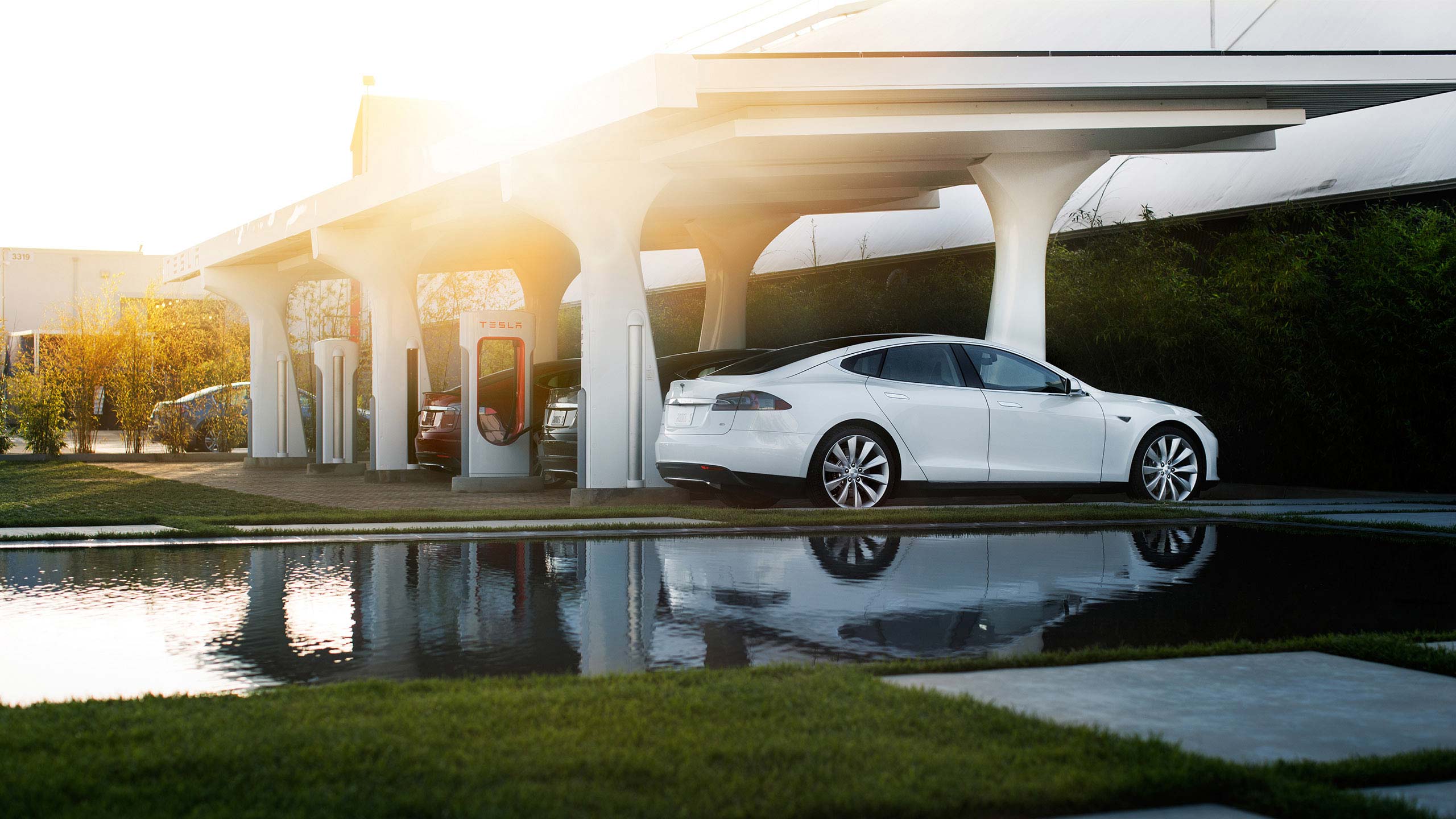

News
Future Teslas Could Come “Energy Included”
Future Teslas could come “energy included”, no matter how much you drive, for the life of the car. Crazy as it sounds, Tesla can actually make money giving Tesla owners free energy at home not just at Superchargers. Key components are already on the road or under development at Tesla. So, how would this work, when will it happen and what does it mean for Tesla owners and Tesla investors?
How it works
Tesla can provide grid regulation and stabilization services worth as much as the energy used for charging, or more, by centrally controlling the time and rate at which Tesla cars are charged. Embedding a modest up-front cost increment into the price of a special Tesla charging connector, pays energy cost in excess of earnings from grid regulation and stabilization as an “annuity”, and can leave a lot of money in Tesla’s pocket, too. This model is similar to Tesla’s Supercharger business – there is a detailed analysis of Tesla’s Supercharger business I did a while back on Seeking Alpha.
Owners will handle charging differently. Instead of setting charging current, normal or range charging, and (optionally) the charging start time, the owner will instead set a time for charging to be completed and whether a normal or range charge is needed by that time. The Tesla charging control center will then match the charging rate of each Tesla car using over-the-air communication links to earn grid regulation fees and capture the best electric rates while making sure each car is recharged when the owner needs to drive off.
Your garage charging connector will be fed from a separate meter and the connector will “identify itself” to the car to enable Tesla controlled charging.
Two things make this scheme economically viable. There is flexibility in exactly when your Tesla charges because most days the charging time is much less than the time your car spends plugged in overnight. This flexibility lets charging be “timed” to help regulate the grid. When wind generation surges due to gusts, or when system load suddenly drops, chargers can be switched on to “swallow” the power surge. The grid system operator, working through the Tesla charging control center can rapidly adjust the charging load to help stabilize the grid.
Rapid adjustment of loads on the grid is valuable because it allows the grid to use more wind power with less fossil generation online as “spinning reserve”. When a large number of car chargers quickly switch on to “swallow” a surge in wind generated power, the value of the “regulation down” can actually be greater than that of the energy used by the chargers. At these times, the system operator will actually pay to have cars charge!
When will free home charging happen?
The answer is, we aren’t there yet. Utilities are only beginning to wrestle with what happens when large amounts of battery storage get connected to the grid. This turns out to be quite complicated. This Sierra Club Energy-Storage Cost-Effectiveness paper offers a summary of the results of several grid storage studies done for the California Independent System Operator (CAISO). At this point we can’t do a specific financial model because technologies, rate structures and even how grid regulation will work with attached storage have not been set.
There are also, at this point, too few Tesla cars on the road to make their charging a significant source of grid regulation. And so far, there is no central control system in place to coordinate the charging of Tesla cars. But times are changing.
CAISO now operates a unified energy imbalance market (EIM) across all or parts of seven states (CA, ID, NV, OR, UT, WA, WY). Within a few years one can imagine upwards of half a million Teslas registered in these states. When these cars are (mostly) plugged in for charging at night, they together represent several giga-watts of load that can be switched on or off in seconds, using the central charging control scheme. That’s a lot of wind regulation capability that requires almost no additional capital investment. It just might get us “free” energy to charge Tesla cars in their owner’s garages.
Status: Where are we on the path to free energy?
Tesla is doing a lot more with grid connected storage and grid regulation than many Tesla owners, and even many Tesla investors realize. In May of this year, J.B. Straubel, Tesla’s Chief Technology Officer made the keynote presentation at Silicon Valley/ SEEDZ Energy Storage Symposium. He discussed a surprising array of Tesla storage products already being made and installed in grid applications, from small residential storage systems being rolled out by SolarCity to large industrial units delivering hundreds of kilowatts. Video of JB’s presentation is available on YouTube here.
A lot of the hardware needed for central charging control of Tesla cars is already part of every Tesla. Every Model S already has a big battery, of course. And high power 10kW or 20kW chargers that are controlled through the touchscreen and the car’s computer. Every Tesla car has a broadband communication link to Tesla company computers that is used to download software updates. These links are available to control charging on a car-by-car basis. Tesla already makes a high power wall connector (HPWC) that can be installed with connection through a standard utility meter. Buying and installing one of these will probably be a requirement to get “free” charging at home.
The only part of the remote charging scheme that isn’t online today is the central control system for “aggregating” car charging so it can be controlled by the grid system operator. Everything else needed to implement aggregated charge control for Tesla cars is either already in production at Tesla or available off the shelf as commercial products or communication services.
In his talk, JB describes aggregation of many residential storage systems to allow the grid operator to use that distributed resource in much the same way aggregated car charging control might be used to stabilize and regulate the grid. At the end of his talk, there is a Q and A session. Someone asks what Tesla’s plans are for eventually implementing the aggregated control center JB described. His answer, “We are building it now.”
Should Tesla owners / investors care about this?
Probably, but some caution is warranted. Tesla owners already talk to their ICE driving friends about how much less electricity costs compared to gasoline or diesel fuel. If in the future all Tesla charging is free, both at home and from Superchargers when traveling long distances, Tesla owners will be left with literally “nothing” to talk about – something their fossil fueled friends may (or may not) appreciate.
For Tesla investors, the prospect of making all the energy for Tesla cars free has some big implications. If the economics parallel those of the Supercharger business, Tesla could see very large additional profit (billions of dollars at least) for something that would require negligible new capital investment by Tesla.
There will be indirect benefits for Tesla, too. Already Tesla cars offer the advantage of much lower energy cost compared to ICE cars, and even hybrids. Free charging at home and at Superchargers would make Tesla cars energy cost even lower than other electric cars which get charged on the owner’s electric meter. While the absolute economic advantage of free charging, compared to other electric cars, will be modest, the emotional value of getting energy for free should never be underestimated as a competitive edge in the market place.
And of course there is the plain, simple novelty of offering a car that costs nothing to run. This is a feature no other car is likely to have, and which no other car (with the exception of soap box derby and solar-car competition cars) has had before. It is newsworthy, people will talk and write about it and it will produce a lot of buzz and free advertising for Tesla. Tesla investors need to be careful not to be overcome with hysteria as the shares go up, yet again.
Disclosure: Author is long Tesla.
News
Tesla will let you bring back this removed Model 3 part for a price
It will cost $595 and is available on Tesla’s website. You will have to have a Model 3 on your Tesla account to purchase the stalk retrofit kit.
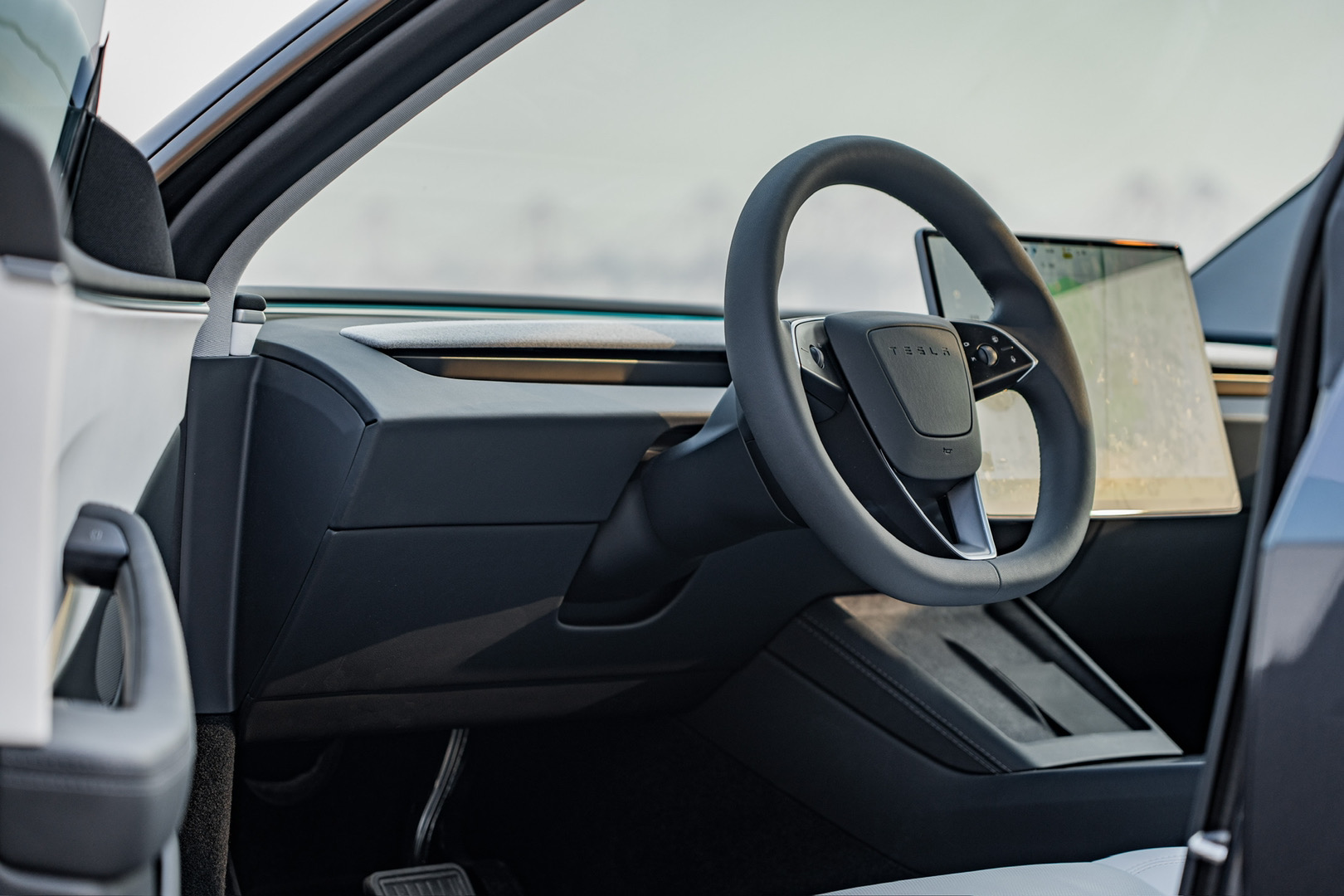
Tesla is now letting Model 3 owners in the United States bring back one part that the company decided to remove after it refreshed the all-electric sedan last year. Of course, you can do it for a price.
With the Model 3 “Highland” refresh that Tesla launched last year, one of the most monumental changes the company made was to ditch the turn signal stalk altogether. Instead, Tesla opted for turn signal buttons, which have been met with mixed reviews.
The change was widely regarded as Tesla preparing for more autonomous driving in its vehicles, especially as its interiors have gotten even more minimalistic.
The lack of a stalk in the new Model 3 was just another move the company made to adjust drivers and passengers to seeing less at the steering wheel column.
However, many drivers did not prefer the use of buttons and wanted the stalk reinstalled. Tesla allowed it in several regions, launching a retrofit kit. It has now made its way to the United States:
🚨 If you really want a stalk on your Tesla Model 3, you can pay $595 for the retrofit kit in the U.S. pic.twitter.com/dyhw4LyQX7
— TESLARATI (@Teslarati) October 8, 2025
It will cost $595 and is available on Tesla’s website. You will have to have a Model 3 on your Tesla account to purchase the stalk retrofit kit.
It is interesting to note that despite Tesla’s strategy to remove the stalk with the new Model 3, which was released in early 2024, the company did not choose to make the same move with the new Model Y.
The new Model Y launched in the United States in early 2025, and Tesla chose to install a stalk in this vehicle.
It seemed as if the turn signal buttons were too much of a polarizing feature, and although the company technically could have given orderers an option, it would not have been the most efficient thing for manufacturing.
News
Tesla Full Self-Driving v14.1 first impressions: Robotaxi-like features arrive
Tesla Full Self-Driving v14.1 is here, and we got to experience it for ourselves.
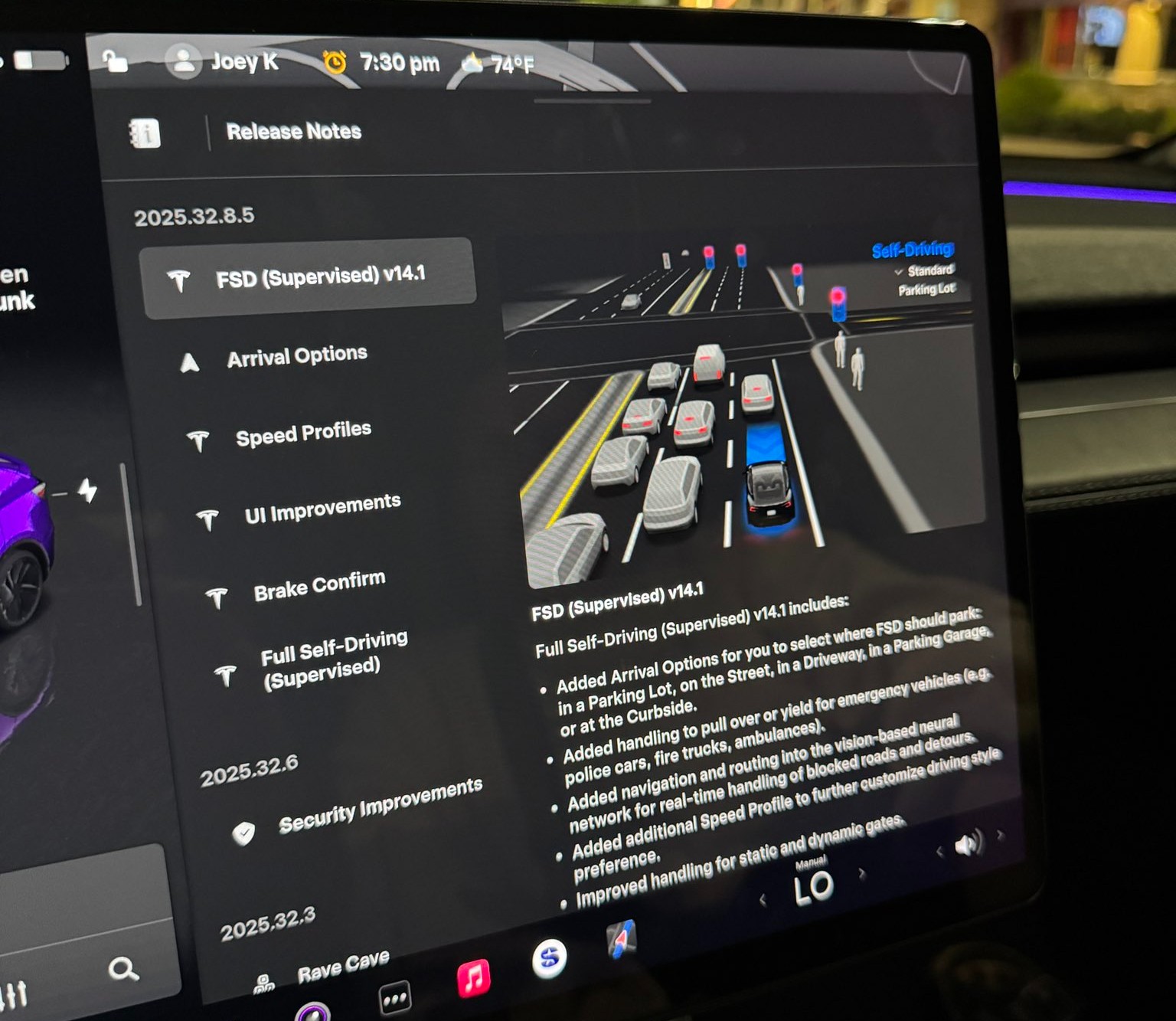
Tesla rolled out its Full Self-Driving v14.1 yesterday, its first public launch of its most robust and accurate FSD iteration yet. Luckily, I was able to get my hands on it through the Early Access Program.
The major changes in FSD v14.1 were revealed in the release notes, which outline several notable improvements in areas such as driving styles, parking, and overall navigation. Here’s what Tesla outlined fully in its release notes:
- Added Arrival Options for you to select where FSD should park: in a Parking Lot, on the Street, in a Driveway, in a Parking Garage, or at the Curbside.
- Added handling to pull over or yield for emergency vehicles (e.g. police cars, fire trucks, ambulances).
- Added navigation and routing into the vision-based neural network for real-time handling of blocked roads and detours.
- Added additional Speed Profile to further customize driving style preference.
- Improved handling for static and dynamic gates.
- Improved offsetting for road debris (e.g. tires, tree branches, boxes).
- Improve handling of several scenarios including: unprotected turns, lane changes, vehicle cut-ins, and school busses.
- Improved FSD’s ability to manage system faults and recover smoothly from degraded operation for enhanced reliability.
- Added alerting for residue build-up on interior windshield that may impact front camera visibility. If affected, visit Service for cleaning!
I wanted to try it for myself. My big must-dos were my complaints with v13.2.9, which included parking when arriving at a destination, Navigation when leaving a destination, and definitely a general improvement in the car traveling at an acceptable rate of speed, even when using the “Hurry” driving style.
Here’s what I noticed with the new Full Self-Driving v14.1:
Speed Profiles are More Realistic
I am driving on “Hurry” about 95% of the time when utilizing Full Self-Driving. In past versions, most notably v13.2.9, my Tesla would slowly reach the speed limit, and it would tend to hang out at about 1-2 MPH either above or below it.
My first observation with v14.1 was the vehicle’s tendency to get right up to speed and, since I was still on Hurry, drive slightly above the speed limit. It never got out of line; it traveled at speeds I would typically drive at manually.
I think this is a big improvement on its own, because I felt that I was pressing the accelerator too frequently in past FSD versions. Oftentimes, it just wasn’t going fast enough to justify the “Hurry” label; it felt more conservative and more like a student driver than anything.
Check it out:
🚨 Tesla Full Self-Driving v14.1 travels at more realistic speeds on local roads.
With 13.2.9, even on Hurry, it would hover the speed limit a little too much, often times traveling 1-2 MPH below or over.
It now travels at more realistic speeds. The removal of Max Speed and… pic.twitter.com/DPC0oBl3SC
— TESLARATI (@Teslarati) October 8, 2025
This was among my favorite improvements, and it was the first thing I noticed as the car navigated me to the Supercharger, where my next positive is.
Navigating into parking lots, self-parking at Supercharger
One of the changes noted in the Release Notes was the addition of Arrival Options, which allows the car to select the appropriate parking situation. Since I was going to charge, the car had already chosen “Charger” as the parking option.
Pulling into a gas station or convenience store, especially during work days, can be stressful, as they are usually congested and full of foot and vehicle traffic. In past FSD versions, I have noticed the car being slightly “jumpy” and even hesitant to proceed through the lot.
Driving through parking lots was a noticeable improvement. It seems as if the car is much more confident in making its way through, while still being aware and cautious enough to safely navigate to the Supercharger.
It then backed straight into a Supercharger stall, which was recently repaired and is once again active. I was actually upset it chose this specific stall because it had been inactive for a while. However, Tesla got this stall back up and running, the car chose it, and backed into the spot flawlessly:
🚨 Check out Tesla Full Self-Driving v14 choosing and backing into a Supercharger
After selecting this Supercharger at the beginning of my trip, my Tesla had already selected “Charger” as the arrival option pic.twitter.com/jqLNwQ9x0o
— TESLARATI (@Teslarati) October 8, 2025
This was super cool to experience, and I think it is a testament to how hard the Tesla AI team has worked. CEO Elon Musk recently stated that FSD would enable automatic parking at Superchargers, which was really awesome to experience firsthand.
I decided to leave the Supercharger and go to an auto parts store to pick up some interior cleaner and some microfiber towels. I love keeping my Tesla clean!
I also thought it would be a great opportunity to see how it would react to another parking lot, how it would navigate it, and let it choose a parking spot. It did it all flawlessly:
🚨 Here’s Tesla Full Self-Driving v14.1 navigating to a store, pulling in, choosing a parking spot, and backing right in
From v13.2.9, this is a drastic improvement. Typically, manual parking was required in past versions when arriving at retail locations. pic.twitter.com/kgFMu6dxnW
— TESLARATI (@Teslarati) October 8, 2025
I had zero complaints about everything here. All of it was done really well.
Making a choice after being caught in the middle of an intersection
I arrived at a tight intersection in Dallastown, PA, and what my car did next has catalyzed quite a conversation on X.
It proceeded out into the middle of the intersection as the light was green. It had to yield to oncoming traffic, and while waiting, the light turned yellow, then red.
Most people, including myself, would have turned right and proceeded through the intersection since the car was already past the line. However, FSD chose to back up and wait for the next light cycle, which I felt was also a more than acceptable option:
🚨 Super cool thing Tesla FSD v14.1 did: it proceeded thru this intersection to turn left, but the light had gone to red before the turn could be completed.
It put itself in reverse and backed up to the “Stop Here on Red” sign/line. Didn’t proceed at a red or impede others. pic.twitter.com/AKb1AI32fK
— TESLARATI (@Teslarati) October 8, 2025
There are some conflicting perspectives on what it chose to do here. Some said they would have proceeded and would want FSD to also proceed. I can agree with that perspective, but I also think it is not the worst thing in the world to back up. In Pennsylvania, I couldn’t find the exact law that says what is right or wrong. Instead, I did see that a left turn on red is only feasible when you’re going from a One-Way street to another One-Way.
I’m not totally sure what is “correct” here, but I think either option is fine. I have personally done both, and I’ve seen other drivers do both. I was more than fine with the car doing this, and I was honestly impressed that it did.
Navigated a busy grocery store lot, found suitable parking
This is not the busiest my local grocery store gets, but it was still congested enough for me to be impressed.
FSD decided to do one loop in the parking lot before it found a spot that it felt was good enough for me. I was perfectly fine with where it chose to park, and I thought it did a really great job. I was impressed with how stress-free I felt, as I have noted in the past that parking lots are definitely an area where Tesla needs to improve.
I was happy with its performance:
🚨 Here, @Tesla Full Self-Driving v14.1 searched for a parking space at the grocery store.
It did one loop, navigating safely through pedestrians and carts before it decided this spot was good enough for me.
This truly will take the stress out of parking at busy stores pic.twitter.com/73U3Bl7Odm
— TESLARATI (@Teslarati) October 8, 2025
Strange right turn signal as if it saw an emergency vehicle
This was the first bug I noticed with FSD v14.1. While traveling on a local road, it put the right turn signal on and approached the curb as if it was pulling over for an emergency vehicle or as if it was going to park on the street.
It then realized its mistake and proceeded:
Now for a couple bugs 🐞
Tesla FSD v14.1 put its right turn signal on as if it was going to pull over. It did move closer to curb, but then realized this wasn’t the correct maneuver for our route.
It proceeded without much issue pic.twitter.com/yoUoyzWMDM
— TESLARATI (@Teslarati) October 8, 2025
I’m not super sure what caused this, but I was a tad bit confused. There were no police cars, ambulances, or anyone with flashing lights to my rear. There was a dump truck on the other side of the road, and I almost felt like the way it navigated “around” that was probably what triggered it.
Navigation is still making strange decisions
I’ve written about navigation and my discontent with some of its decisions. It seems v14.1 didn’t resolve much of anything with navigation, and it did a couple of things wrong.
The first was that it tried to take the illogical and pointless path out of the Supercharger. I wrote about this a few days ago, as FSD tried to take my car the wrong way.
It did it again, but I overrode the decision, and it was all okay:
Bug 🐞 no. 3: I have this issue at this Supercharger and I talk about it frequently.
Navigation takes illogical and strange exit from Supercharger. I override, turning left instead of right, Nav adjusts and picks correct routing. Hoping this is resolved soon. pic.twitter.com/4VsCGHZbYW
— TESLARATI (@Teslarati) October 8, 2025
This is a minor issue, but it is still pretty frustrating. Hopefully, the navigation will learn after performing this adjustment after enough times.
The next navigation issue was more frustrating than the Supercharger one, especially considering it completely ignored the route. The navigation had the vehicle very clearly heading straight, but out of nowhere, the right turn signal went on. I overrode it, but the car still turned right, ignoring the navigation completely:
Bug 🐞 no. 2: Navigation clearly shows the route continuing straight through the traffic light. I noticed the right turn signal coming on, so I overrode it.
The car turned right anyway. I took over and drove manually until I was able to get to a stop so I could re-activate FSD pic.twitter.com/nxt4UlRqkK
— TESLARATI (@Teslarati) October 8, 2025
I ended up taking over here and driving until I could get to a stop sign.
Final Thoughts
I am really impressed with all of the changes Tesla made with FSD v14.1, and while there were a handful of bugs, things were tremendously better than v13.2.9.
News
Nvidia CEO Jensen Huang regrets not investing more in Elon Musk’s xAI
The CEO stated that Nvidia is already an investor in xAI, but he wished he had given the artificial intelligence startup more money.
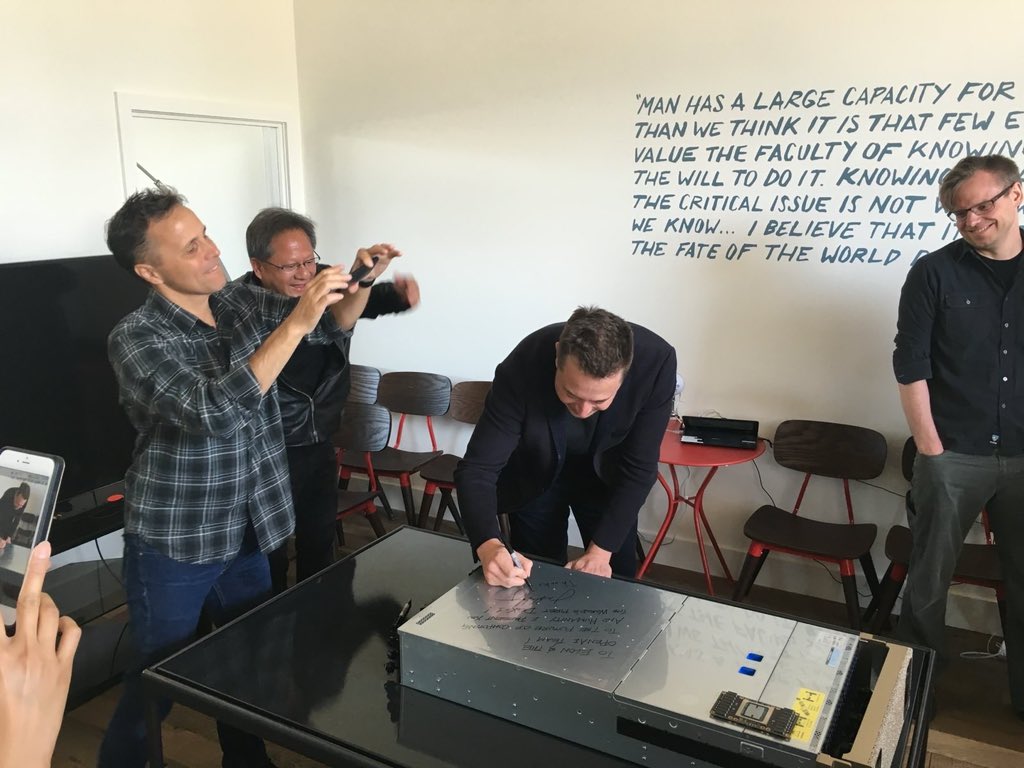
Nvidia CEO Jensen Huang revealed that one of his investment regrets is not putting more money into Elon Musk’s artificial intelligence startup, xAI.
Speaking in a CNBC interview, Huang said Nvidia is already an investor in xAI but wished he had given the artificial intelligence startup more money. This was due to Musk’s record of building transformative companies such as Tesla and SpaceX.
A new wave of transformative AI firms
Huang said he’s very excited about xAI’s latest financing round. He described Musk’s company as part of a powerful new generation of AI developers, alongside OpenAI and Anthropic. that are reshaping the computing landscape.
“I’m super excited about the financing opportunity they’re doing. The only regret I have about xAI, we’re an investor already, is that I didn’t give him more money. You know almost everything that Elon’s pat of, you really want to be part of as well,” the Nvidia CEO stated.
The CEO also clarified Nvidia’s investment in xAI, revealing that Elon Musk had offered the investment opportunity to the chipmaker. “He (Musk) gave us the opportunity to invest in xAI. I’m just delighted by that,” Huang stated.
AI investment boom
Huang contrasted today’s AI-driven economy with the early days of the internet. “Back then, all the internet companies combined were maybe $30 or $40 billion in size,” he said. “If you look at the hyperscalers now, that’s about $2.5 trillion of business already operating today.”
He also stated that the ongoing shift from CPU-based computing to GPU-powered generative AI represents a “multi-trillion-dollar buildout” that Nvidia is looking to support. Huang added that every Nvidia engineer now works with AI coding assistants such as Cursor, which he called his “favorite enterprise AI service,” and it has led to a major productivity boost across the company.
Watch Nvidia CEO Jensen Huang’s CNBC interview in the video below.
-
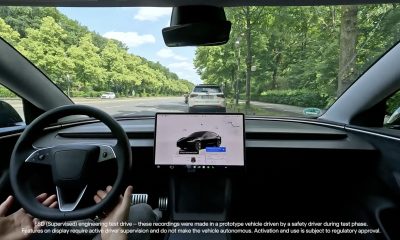
 Elon Musk2 weeks ago
Elon Musk2 weeks agoTesla FSD V14 set for early wide release next week: Elon Musk
-
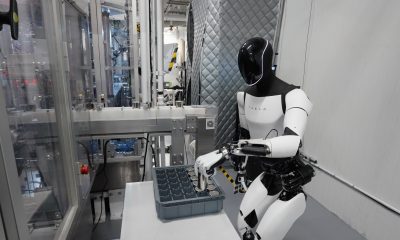
 News2 weeks ago
News2 weeks agoElon Musk gives update on Tesla Optimus progress
-
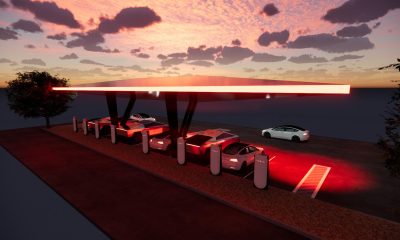
 News2 weeks ago
News2 weeks agoTesla has a new first with its Supercharger network
-
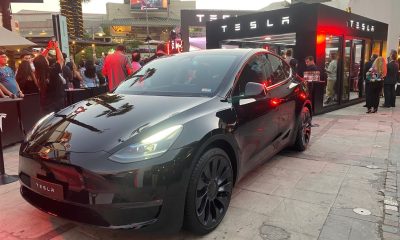
 News2 weeks ago
News2 weeks agoTesla job postings seem to show next surprise market entry
-
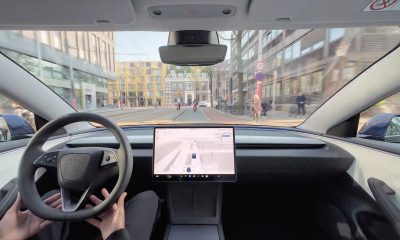
 Investor's Corner2 weeks ago
Investor's Corner2 weeks agoTesla gets new Street-high price target with high hopes for autonomy domination
-
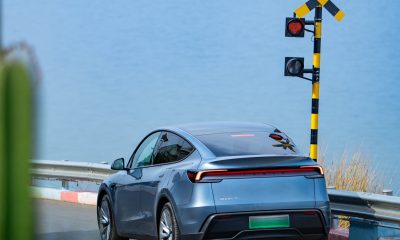
 Lifestyle2 weeks ago
Lifestyle2 weeks ago500-mile test proves why Tesla Model Y still humiliates rivals in Europe
-
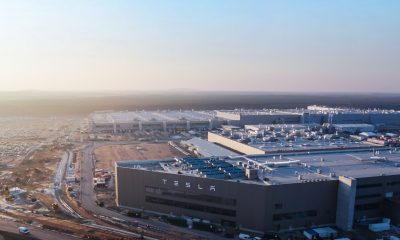
 News1 week ago
News1 week agoTesla Giga Berlin’s water consumption has achieved the unthinkable
-
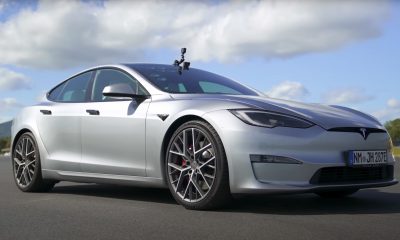
 Lifestyle2 weeks ago
Lifestyle2 weeks agoTesla Model S Plaid battles China’s 1500 hp monster Nurburgring monster, with surprising results

